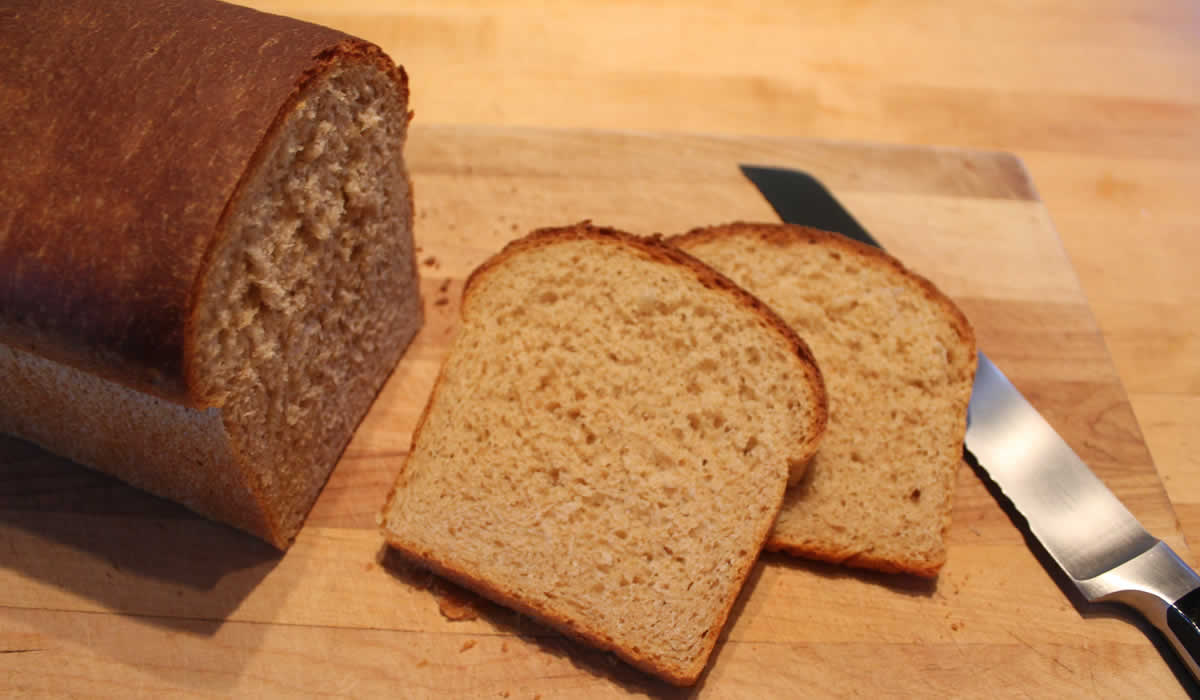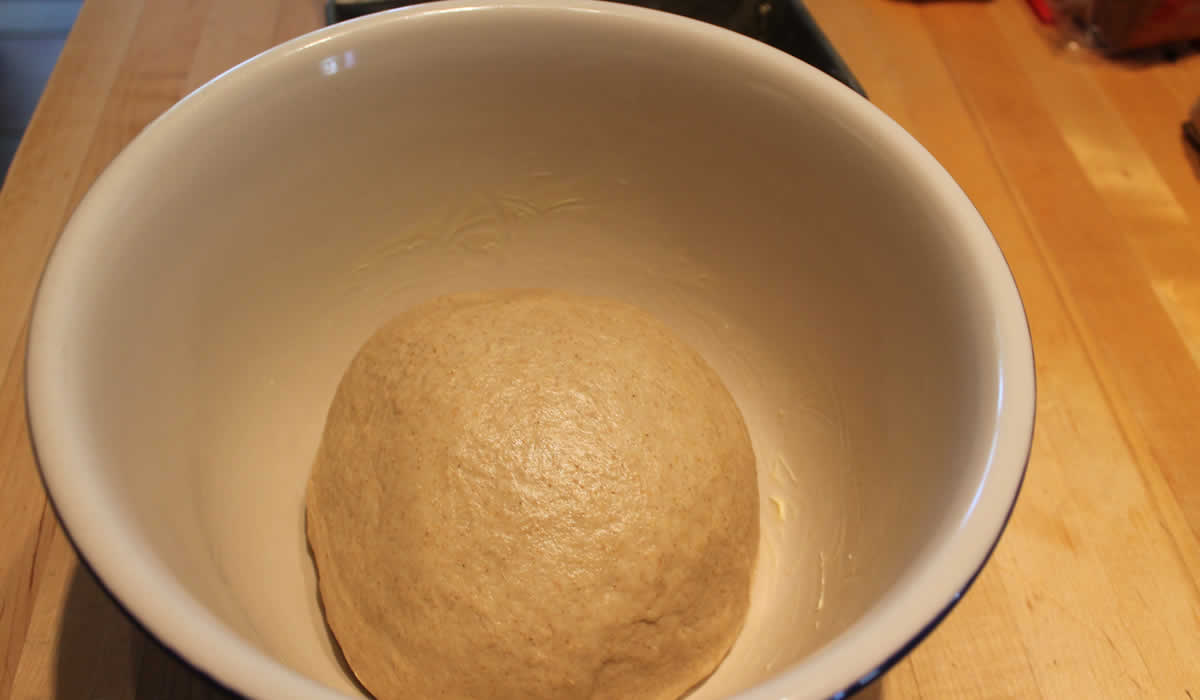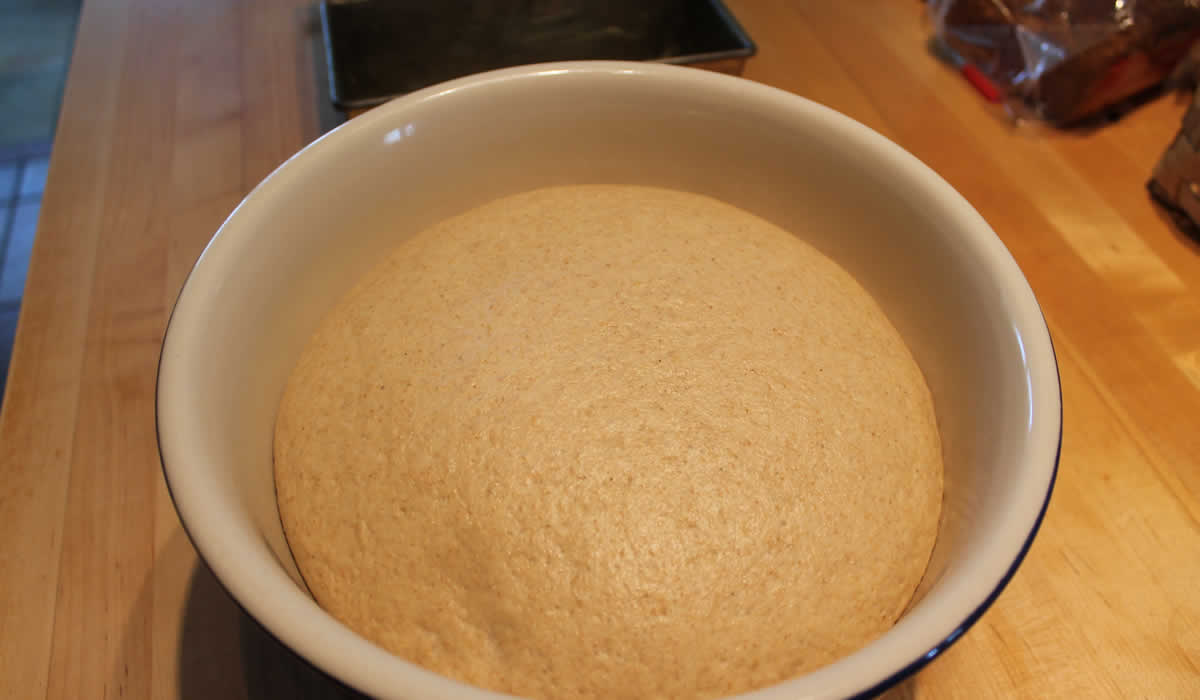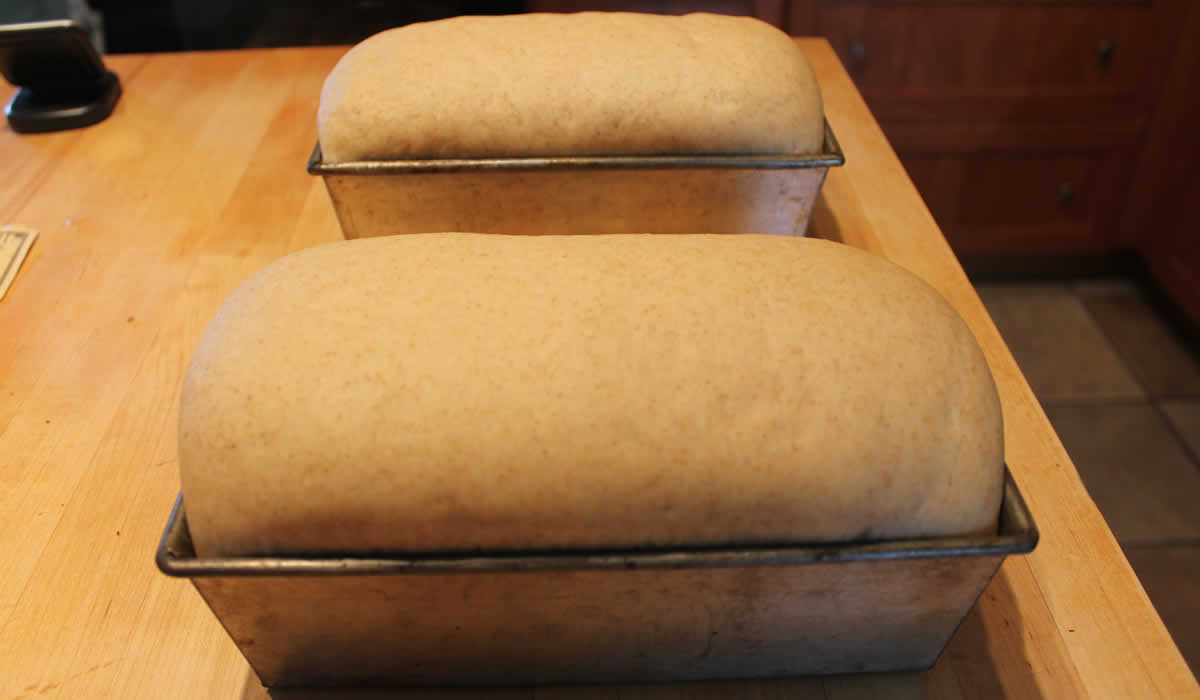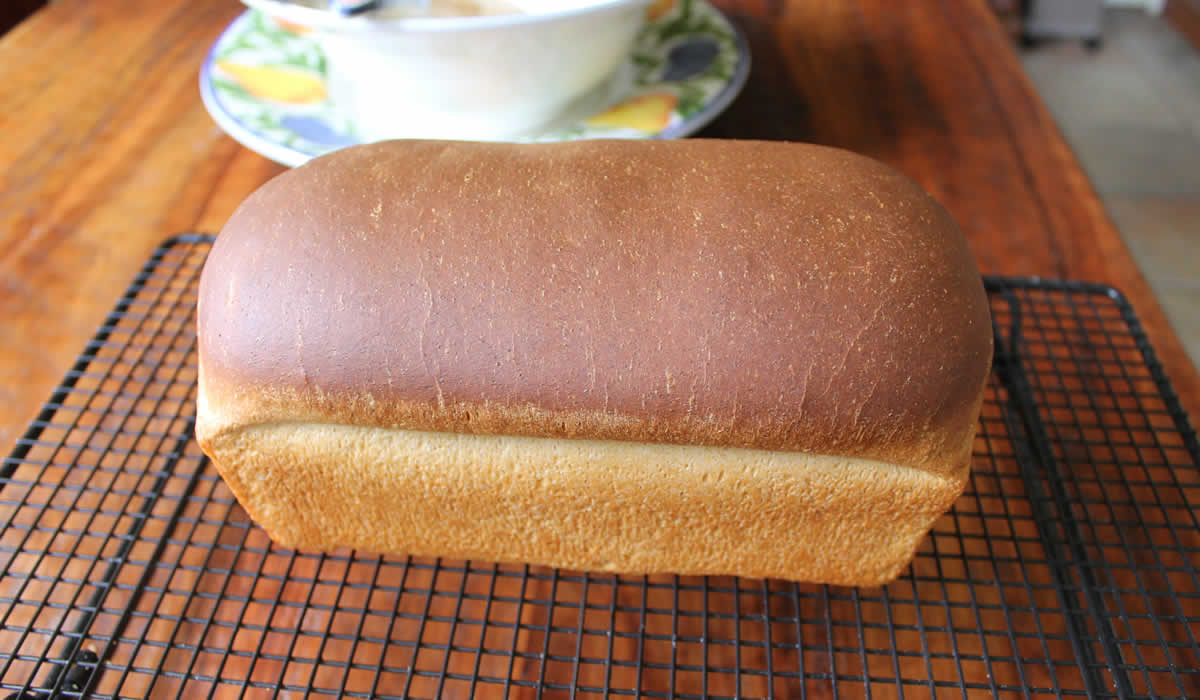When you make a lot of bread, you get a feel for the dough. It speaks to you as you’re kneading or forming. This dough didn’t just speak to me – it sang! From the minute I started I knew it was going to be a winner.
I usually make rustic loaves, but today I wanted to make a couple of loaves of sandwich bread. I don’t make a lot of loaf-type breads and their approach and structure is different from those I usually make.
The rustic breads are simply flour, water, salt, and yeast – sometimes with a starter and sometimes without. Mixing methods, ratios, baking temperatures, and other variables change the outcome – but they all have the same four ingredients.
Sandwich breads, however, are approached more like cakes. They need sugar and fat for tenderness. Milk replaces water, the dough is a tad softer – the flour to liquid ratio is slightly different. You bake a lot of bread and these become things you pretty much do by rote. Your eyes and hands tell you what you need, but you need to know what you’re looking for in the first place.
I have a cupboard full of different flours, so I thought a multigrain bread would help to use up some of the stockpile. I grabbed sprouted wheat, whole wheat, rye, and my Italian “00” flours and went to work.
I generally don’t care for 100% whole wheat breads. I often find them too dense and the flavor overwhelming. They can work great for a specific purpose, but I’m a multi-purpose kinda guy. I find that a 50/50 blend of white to other flours is a good start, along with a liquid to flour ratio of about 1 cup liquid to 3 cups flour. There are very specific ratios of liquid to flour to yeast and salt that are used commercially to scale recipes up and down – and are especially useful when making sourdough breads and replenishing starters – but for making a couple of loaves at home, I usually rely on sight and touch – and start with 1 cup 3 cups.
Bread baking is not difficult. It’s simply getting the ratios right – and you can easily do that by following a trusted recipe. I made this up using stuff I had in the kitchen. You can, as well.
And… don’t try to “make it healthier” by omitting the butter or cutting down on the salt, using all whole wheat flour or water instead of whole milk… This is science. You need certain properties in specific ratios to work. The simple fact that you’re making it at home is making it healthier than anything you’ll buy in a grocery store.
Multi Grain Sandwich Bread
- 2 1/2 tsp yeast
- 1/4 cup water
- 1 tsp sugar
- 2 cups whole milk – room temperature
- 1/2 stick butter – softened
- 3 cups white flour
- 1 cup sprouted wheat flour
- 1 cup whole wheat flour
- 1/2 cup rye flour
- 1 tbsp salt
- 2 tbsp sugar
Mix yeast with water and sugar and proof for 5 minutes.
Add milk and white flour and blend on low speed with dough hook. Slowly add very soft butter, remaining flours, sugar, and salt.
Continue mixing for about 8 minutes. Dough should completely pull away from the sides of the bowl, but won’t pull away completely from bottom. Add water or flour by tablespoons, if needed.
Roll dough into a ball and place in a buttered bowl.
Cover, and allow to rise in a warm, draft-free spot until doubled. I use the microwave with a 2-cup Pyrex measuring cup filled with boiling water.
When doubled, form into two loaves, place in buttered bread pans, and allow to rise, again, until doubled.
Bake in a preheated 400°F/200°C oven for about 40 minutes, or until baked through and hollow-sounding when tapped.
Remove from pans and cool on racks completely, before slicing.
Light and delicate with a nice, crispy crust. I prefer a bit of crunch to my crust, but you can always brush on some melted butter right after it comes out of the oven to soften it a bit, if you like.
There are a lot of bread cook books out there – and the sheer volume of them can make bread making intimidating – but the one book that can really guide anyone though the process is Beard on Bread by James Beard.
James Beard really is my culinary hero and his approach to cooking and baking is simply follow the instructions and learn what happens when you change things. The forward to his original 1959 cookbook states:
Cooking is one everyday task that can be creative. You become a creative cook by first becoming a good basic cook. Your transition from basic to creative cooking takes some doing, some actual experience in finding out what happens when you add this or change that. Once you have made this transition, you will never lack admirers. Good food has a magic appeal. You may grow old, even ugly, but if you are a good cook, people will always find the path to your door.
How can you not love a guy who thinks like this?

